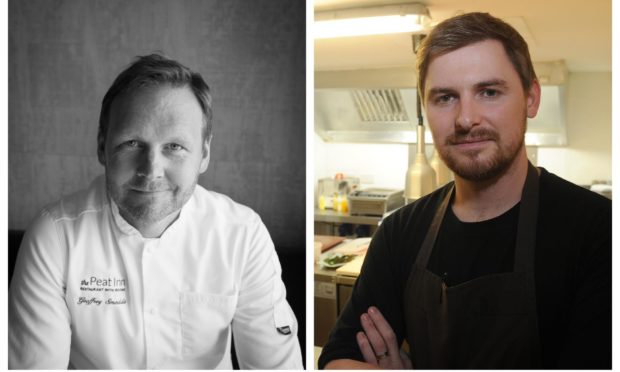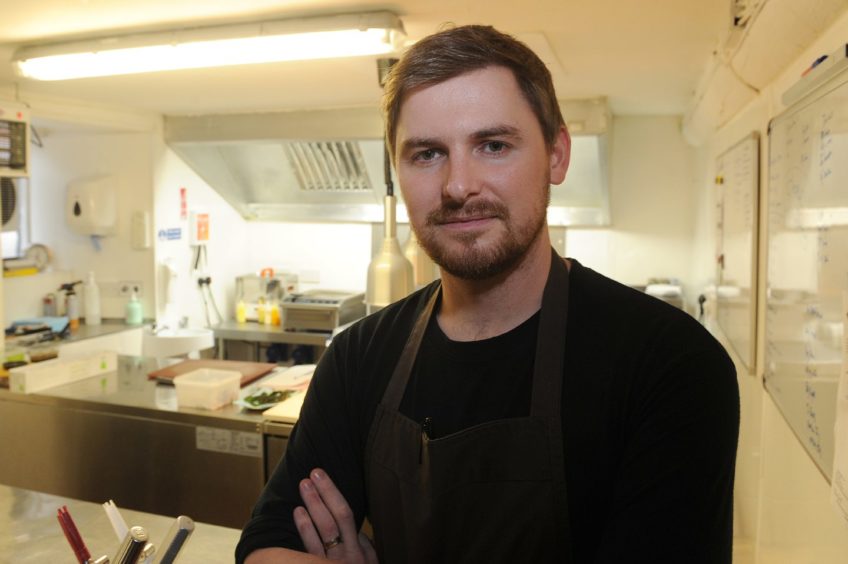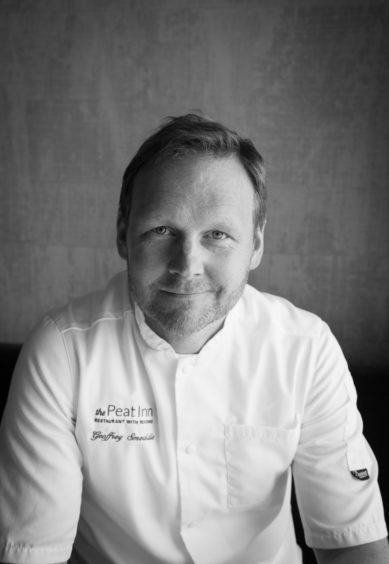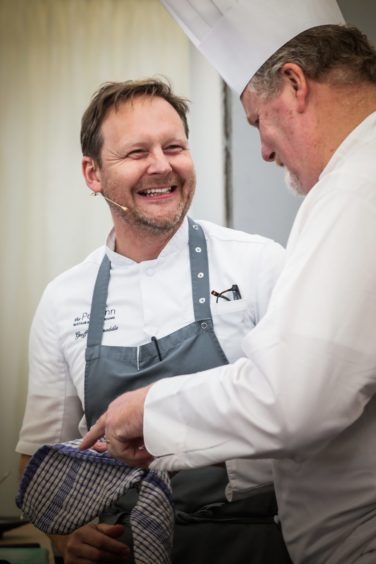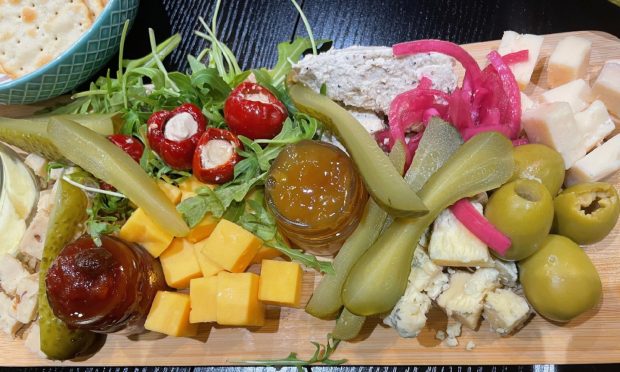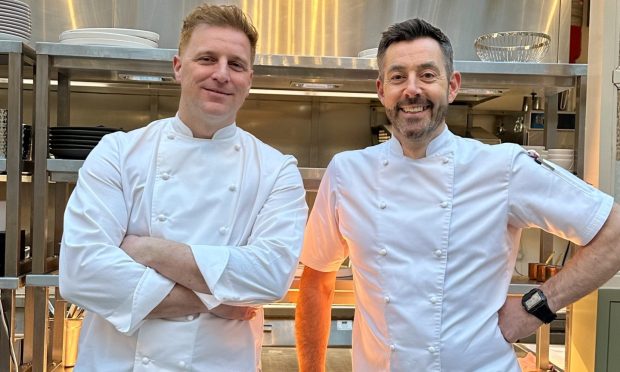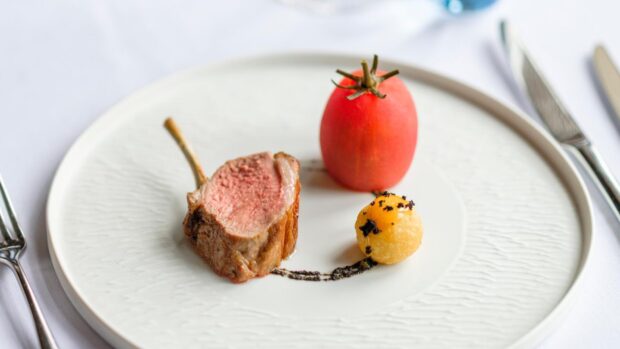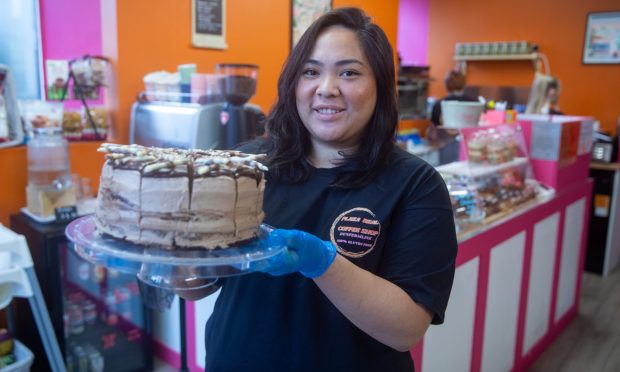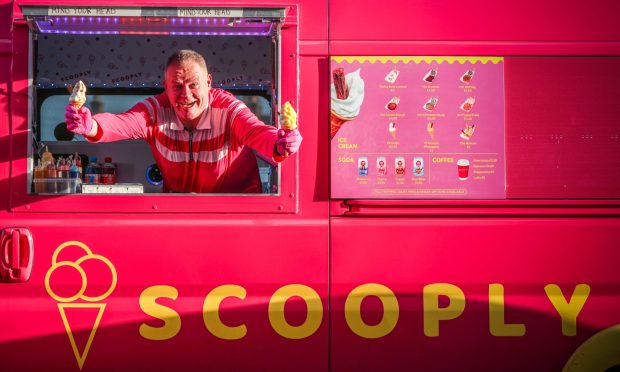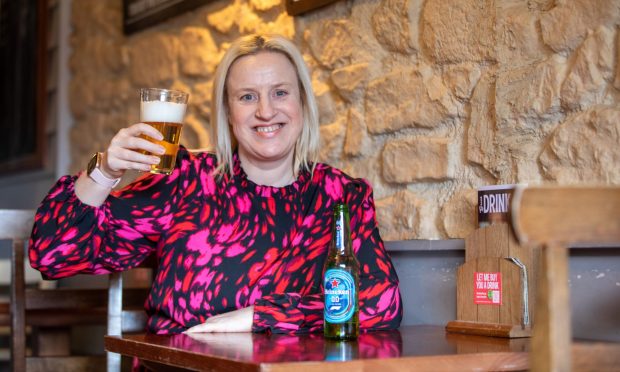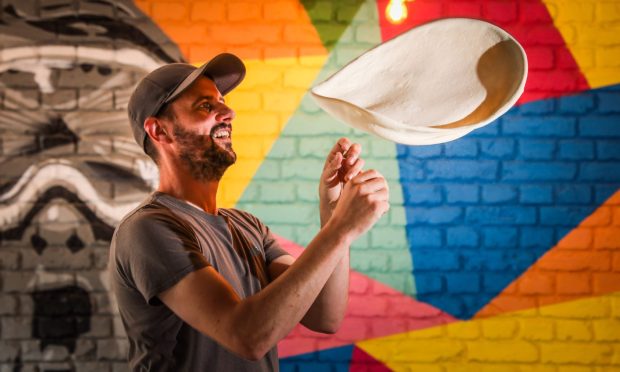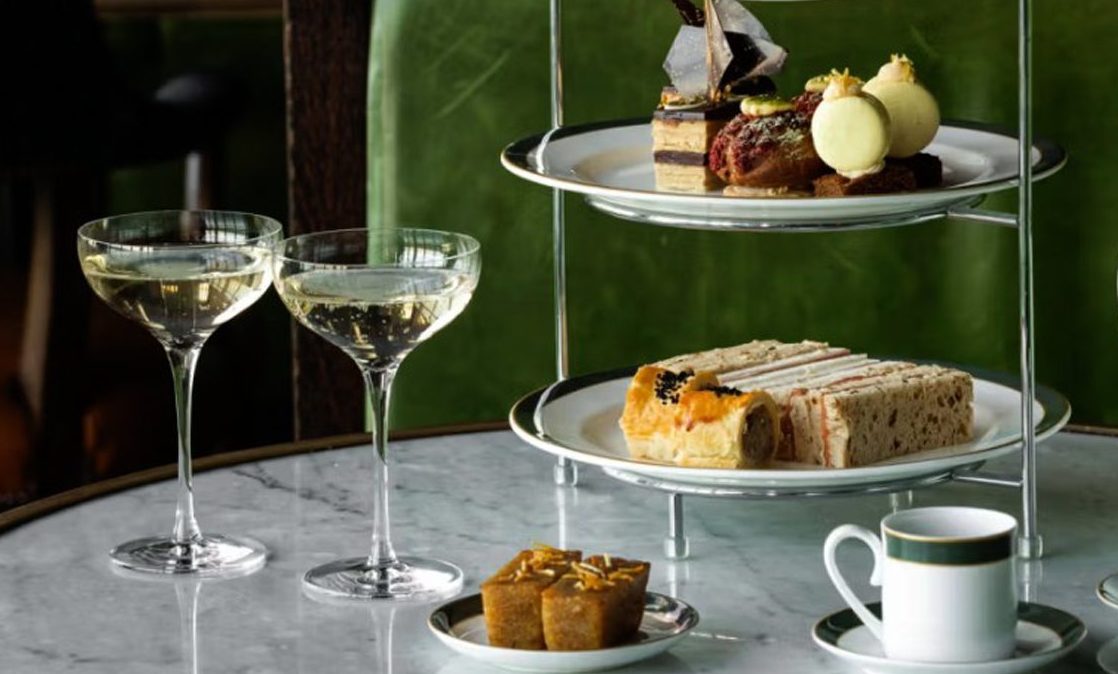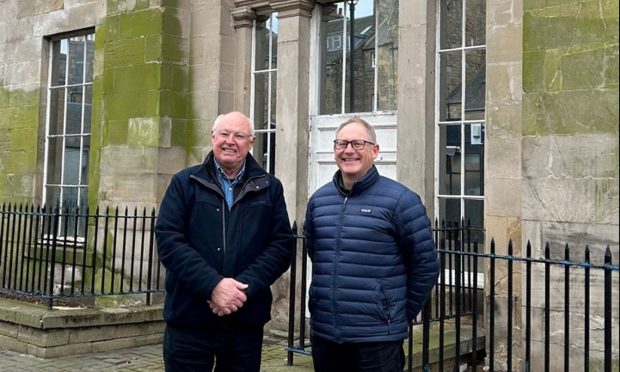Billy Boyter and Geoffrey Smeddle, who both run establishments in Fife, tell us what it takes to maintain their ‘star standards’ every year after learning they had retained theirs for 2021.
Michelin stars represent the cream of the crop when it comes to fine dining and they’re one of the most difficult accolades to achieve, with the majority of recipients having to consistently establish innovative ways of cooking.
But once you receive a star, or two, or sometimes three, that doesn’t set you up for life and each chef has to work equally as hard to maintain their status annually.
A virtual ceremony on Monday evening, hosted by Davina McCall, revealed who the newcomers for the Michelin Guide 2021 were, with the accompanying new app launched shortly after the ceremony affirming those who had maintained their “star standards”.
Several of Scotland’s current one-star Michelin restaurants and a two-star restaurant learned that they’d managed to maintain their “star standards”, which was particularly welcome news after a tumultuous year for the hospitality industry.
Two of the star holders, Billy Boyter of The Cellar in Anstruther, and Geoffrey Smeddle of The Peat Inn, near St Andrews, spoke to The Courier about what it took to retain their one stars after a year of cooking in a pandemic.
Billy Boyter – The Cellar – One Michelin Star
Billy Boyter is the chef proprietor of The Cellar in Anstruther and has held on to his one Michelin star every year consecutively since 2015.
On winning it this year, he says he reckons it was partly to do with his mentality of making things better than before with every small change the restaurant undertakes, while keeping up the consistency in cooking.
He said: “I imagine there is a criteria chefs have to meet to get a star but it’s not something available for us to see. For me, a Michelin star is the consistency of your cooking and the quality of your produce. I think those kinds of things are what make Michelin star restaurants stand out.
“There probably needs to be a bit of flair in there as well and some individuality that you can see the chef puts into it.
Individuals in the kitchen
He continues: “Maintaining that kind of standard all comes down to the individuals in the kitchen, really, and whether they’ve got that drive and skillset, I suppose, to maintain those sorts of levels.
“The inspectors don’t tell you they’re coming and occasionally they will announce themselves after their meal if they want a little bit more information, if you’ve had a change in style of cooking, or if there have been any alterations to the restaurant.
Maintaining that kind of standard all comes down to the individuals in the kitchen, really, and whether they’ve got that drive and skillset, I suppose, to maintain those sorts of levels.”
Billy Boyter
“However, the majority of the time you don’t know they’ve been. Unless you get the occasional time where the restaurant manager might recognise someone who has previously announced themselves. In that case you know you’ve been inspected.
“Other than that you generally have no idea that they’ve been in. It used to always be the case that people thought they came by themselves, so a single diner was sometimes a bit of a giveaway. But from what you see online now, they go out for meals with their families, or sometimes meet up with other inspectors and will come in pairs.
“To be honest, I think that’s a great thing because if you could spot them there would be the danger you would try and change things or try to make things better, which would be false. The whole idea is that you’re a consistent restaurant and everyone gets the same – not just making things better for one inspector.”
Winning each year
So what does it take to achieve the accolade year after year? Billy highlights the fact that you can’t be solely focused on winning awards when it comes to achieving high standards.
He added: “I think the way they do it is good as it shows a real fairness in the way they judge things.
“I think about the awards when it comes round to that time of year again. But other than that, I think if you start thinking about your cooking for accolades or awards, for me it’s just not a natural way of cooking.
Never taken for granted. Delighted to have retained our Michelin Star for 2021. And a special congratulations to @Chef_LornaMcNee at @CailBruich in Glasgow on becoming Scotland’s newest Michelin Star Restaurant @MichelinGuideUK pic.twitter.com/qRZKe7jNzp
— The Cellar (@The_Cellar_Fife) January 25, 2021
“If you’re cooking for awards, it just doesn’t seem right. Cooking, for me, is creative and a personal thing. So I don’t want to feel that I’m cooking for a guide or rosettes or anything like that.
“We’re just going to keep on doing what we’re doing. I think it’s better just for restaurants to evolve naturally. Any change we make in the restaurant has to be better than what we previously had. So if we’re changing a dish, I always want to see an improvement in what we’re doing – whether it’s in the food, the service, buying new crockery.
“I’ve kind of kept that mentality since we opened back in 2014. For me, as long as we keep on going down that sort of route and keep on challenging ourselves, then the restaurant will always improve. That’s kind of the way I look at things.”
Geoffrey Smeddle – The Peat Inn – One Michelin Star
Chef owner of The Peat Inn near St Andrews, Geoffrey Smeddle has held on to his Michelin star every year since January 2010.
Following a year of trying to cook during a pandemic, Geoffrey says that establishments across the country which received or retained their stars will have breathed a sigh of relief.
He says: “Having a star this year, for any restaurant anywhere that had one before and has managed to retain it, there will be a bigger sigh of relief than usual. When you do get the chance to open up, you want to be opening again with the best possible publicity you can and your reputation in tact and part of that is having a star.
“It’s a reassurance to people that in choosing your Michelin-starred restaurant, it’s a choice that’s going to please them and delight them and that they can place their trust in you. So to reopen after a pandemic with a star still in place is important for a business. And the Peat Inn is still going to be very good value for money when it comes to dining in a Michelin Star establishment.”
Maintaining the accolade
But what goes in to maintaining a star every year? Geoffrey highlights the importance of consistency when it comes to ensuring you remain in the guidebook.
He continues: “When we first got our star, the guidebook used to come out in January, and it was January 2010. Then it was later that year that they moved it to the October for the following year, which we retained, meaning we got awarded it twice that year.
“In terms of retaining a star each year, it’s really about focusing on what your style of cooking is. The key is consistency and you can’t just go off on a tangent. It’s consistency from one plate to the next, within your working week, and across the year, but also consistency of what you offer.
I think ‘maintaining’ is a dangerous word – you need to be always moving forward and refining and examining what you’re doing, testing yourself and being better tomorrow than you were today.”
Geoffrey Smeddle
“We can’t suddenly decide tomorrow that we’re going to do a Japanese menu, then the following week decide to be a French bistro menu, then suddenly do pub food then take on a 15-course tasting menu. There needs to be a consistency in the offering, as well as in the quality.
“I think ‘maintaining’ is a dangerous word – you need to be always moving forward and refining and examining what you’re doing, testing yourself and being better tomorrow than you were today.
“Ultimately you shouldn’t be thinking about the guidebook, you should be thinking about your guests. If you are pleasing them and giving them a reason to come back another time, then an inspector is going to feel the same way. In the end, an inspector is just another guest.”
What’s in a star?
He continued: “The simplest way I can sum up what is needed for one Michelin star is ‘accuracy of cooking and clarity of flavour’. This is a motto we have written on a board in the kitchen and those were the words spoken to me once by an inspector at the end of one of their inspections. It sounds simple but to produce that for every single guest, day in and day out is the challenge. And that’s why stars are hard to win, relatively rare and why to renew them every year is a big achievement for any restaurant.”
A tumultuous year
After a tumultuous year for the hospitality industry, many have questioned how effective the Michelin guide’s assessment has been on restaurants this year, though Geoffrey clarifies that many of the inspections will have been done well in advance of the pandemic.
He added: “There’s no printed guidebook this year, it’s online, and people were asking how Michelin could release any kind of worthwhile guide when restaurants have been closed so much.
“But the information they’re releasing now is what’s happened over the past 18 months. So in August 2019, the guidebook went to print for 2020, and was then released in October 2019.
We are very proud to confirm we have retained our @Michelin star for the 12th consecutive year. Congratulations to our amazing team and sincere thanks to our guests for all your support x #StaySafe #ThePeatInn #SeeYouSoon ⭐️ ❤️💪
— The Peat Inn (@ThePeatInn) January 25, 2021
“Though the guidebook for last year was printed in 2019, the inspections for the 2021 guide started almost immediately from August 2019. So they had all that time from August to March 2020 to do inspections as normal, before the pandemic hit.
“Then restaurants here were open again from July to October 2020. So there have been many months in which inspections were able to take place, which is why they were still able to release an edition for 2021, albeit an online version only.
“To be included in the guidebook is itself an accolade that people should be proud of, then if you have the attention drawn to your establishment by the addition of a star, then that’s of course an additional success.”
